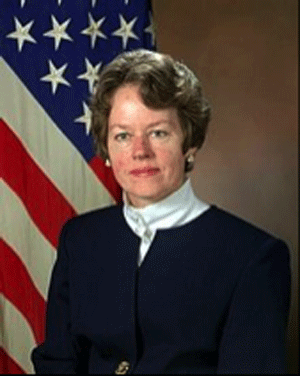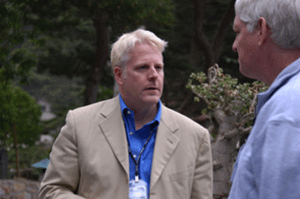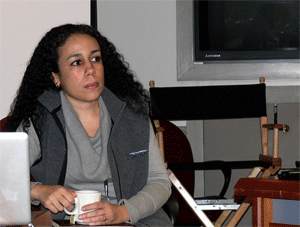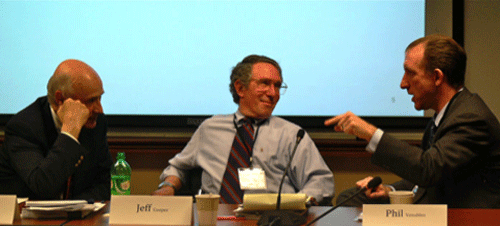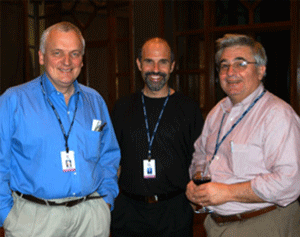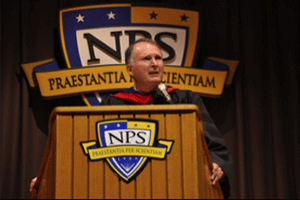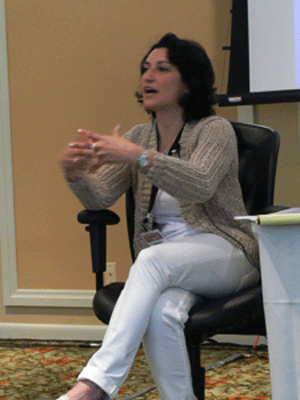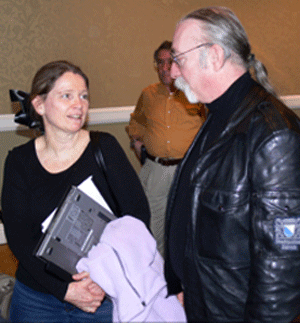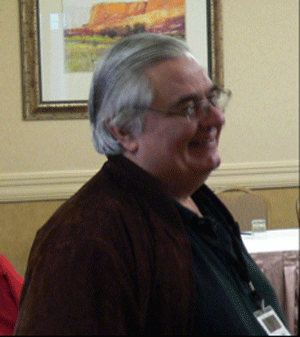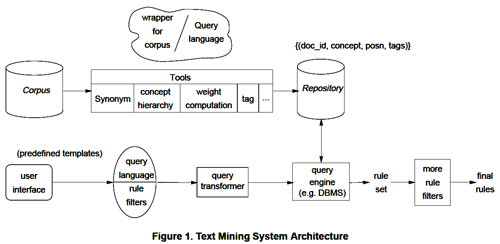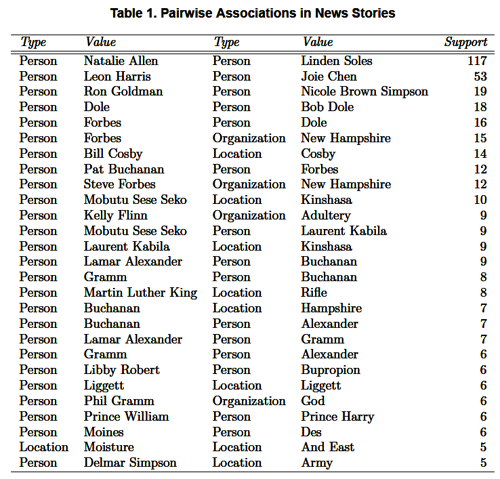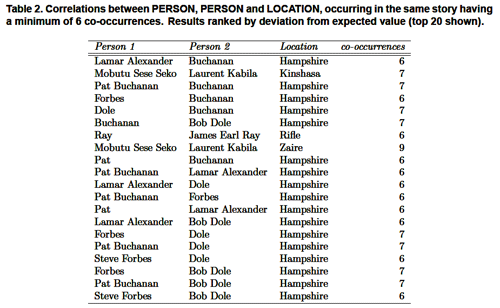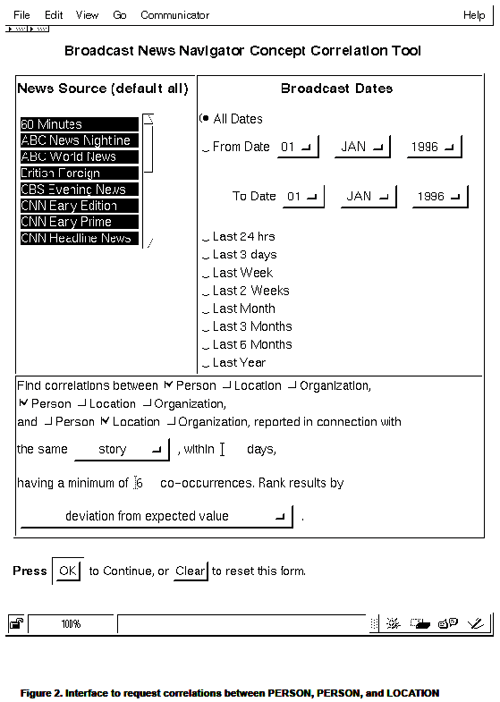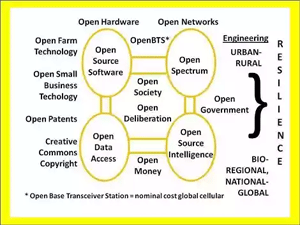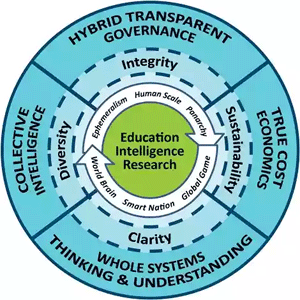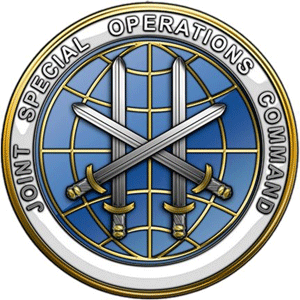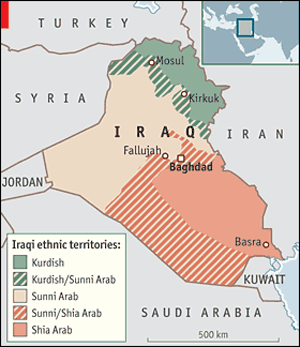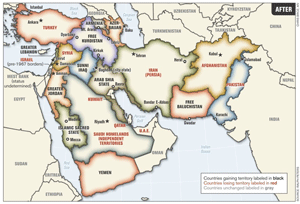How the CIA made Google: Inside the secret network behind mass surveillance, endless war, and Skynet—
by Nafeez Ahmed
InsurgeIntelligence
January 22, 2015
NOTICE: THIS WORK MAY BE PROTECTED BY COPYRIGHT
YOU ARE REQUIRED TO READ THE COPYRIGHT NOTICE AT THIS LINK BEFORE YOU READ THE FOLLOWING WORK, THAT IS AVAILABLE SOLELY FOR PRIVATE STUDY, SCHOLARSHIP OR RESEARCH PURSUANT TO 17 U.S.C. SECTION 107 AND 108. IN THE EVENT THAT THE LIBRARY DETERMINES THAT UNLAWFUL COPYING OF THIS WORK HAS OCCURRED, THE LIBRARY HAS THE RIGHT TO BLOCK THE I.P. ADDRESS AT WHICH THE UNLAWFUL COPYING APPEARED TO HAVE OCCURRED. THANK YOU FOR RESPECTING THE RIGHTS OF COPYRIGHT OWNERS.
Part 1
INSURGE INTELLIGENCE, a new crowd-funded investigative journalism project, breaks the exclusive story of how the United States intelligence community funded, nurtured and incubated Google as part of a drive to dominate the world through control of information. Seed-funded by the NSA and CIA, Google was merely the first among a plethora of private sector start-ups co-opted by US intelligence to retain ‘information superiority.’
The origins of this ingenious strategy trace back to a secret Pentagon-sponsored group, that for the last two decades has functioned as a bridge between the US government and elites across the business, industry, finance, corporate, and media sectors. The group has allowed some of the most powerful special interests in corporate America to systematically circumvent democratic accountability and the rule of law to influence government policies, as well as public opinion in the US and around the world. The results have been catastrophic: NSA mass surveillance, a permanent state of global war, and a new initiative to transform the US military into Skynet.
In the wake of the Charlie Hebdo attacks in Paris, western governments are moving fast to legitimize expanded powers of mass surveillance and controls on the internet, all in the name of fighting terrorism.
US and European politicians have called to protect NSA-style snooping, and to advance the capacity to intrude on internet privacy by outlawing encryption. One idea is to establish a telecoms partnership that would unilaterally delete content deemed to “fuel hatred and violence” in situations considered “appropriate.” Heated discussions are going on at government and parliamentary level to explore cracking down on lawyer-client confidentiality.
What any of this would have done to prevent the Charlie Hebdo attacks remains a mystery, especially given that we already know the terrorists were on the radar of French intelligence for up to a decade.
There is little new in this story. The 9/11 atrocity was the first of many terrorist attacks, each succeeded by the dramatic extension of draconian state powers at the expense of civil liberties, backed up with the projection of military force in regions identified as hotspots harbouring terrorists. Yet there is little indication that this tried and tested formula has done anything to reduce the danger. If anything, we appear to be locked into a deepening cycle of violence with no clear end in sight.
As our governments push to increase their powers, INSURGE INTELLIGENCE can now reveal the vast extent to which the US intelligence community is implicated in nurturing the web platforms we know today, for the precise purpose of utilizing the technology as a mechanism to fight global ‘information war’ — a war to legitimize the power of the few over the rest of us. The lynchpin of this story is the corporation that in many ways defines the 21st century with its unobtrusive omnipresence: Google.
Google styles itself as a friendly, funky, user-friendly tech firm that rose to prominence through a combination of skill, luck, and genuine innovation. This is true. But it is a mere fragment of the story. In reality, Google is a smokescreen behind which lurks the US military-industrial complex.
The inside story of Google’s rise, revealed here for the first time, opens a can of worms that goes far beyond Google, unexpectedly shining a light on the existence of a parasitical network driving the evolution of the US national security apparatus, and profiting obscenely from its operation.
The shadow network
For the last two decades, US foreign and intelligence strategies have resulted in a global ‘war on terror’ consisting of prolonged military invasions in the Muslim world and comprehensive surveillance of civilian populations. These strategies have been incubated, if not dictated, by a secret network inside and beyond the Pentagon.
Established under the Clinton administration, consolidated under Bush, and firmly entrenched under Obama, this bipartisan network of mostly neoconservative ideologues sealed its dominion inside the US Department of Defense (DoD) by the dawn of 2015, through the operation of an obscure corporate entity outside the Pentagon, but run by the Pentagon.
In 1999, the CIA created its own venture capital investment firm, In-Q-Tel, to fund promising start-ups that might create technologies useful for intelligence agencies. But the inspiration for In-Q-Tel came earlier, when the Pentagon set up its own private sector outfit.
Known as the ‘Highlands Forum,’ this private network has operated as a bridge between the Pentagon and powerful American elites outside the military since the mid-1990s. Despite changes in civilian administrations, the network around the Highlands Forum has become increasingly successful in dominating US defense policy.
Giant defense contractors like Booz Allen Hamilton and Science Applications International Corporation are sometimes referred to as the ‘shadow intelligence community’ due to the revolving doors between them and government, and their capacity to simultaneously influence and profit from defense policy. But while these contractors compete for power and money, they also collaborate where it counts. The Highlands Forum has for 20 years provided an off the record space for some of the most prominent members of the shadow intelligence community to convene with senior US government officials, alongside other leaders in relevant industries.
I first stumbled upon the existence of this network in November 2014, when I reported for VICE’s Motherboard that US defense secretary Chuck Hagel’s newly announced ‘Defense Innovation Initiative’ was really about building Skynet — or something like it, essentially to dominate an emerging era of automated robotic warfare.
That story was based on a little-known Pentagon-funded ‘white paper’ published two months earlier by the National Defense University (NDU) in Washington DC, a leading US military-run institution that, among other things, generates research to develop US defense policy at the highest levels. The white paper clarified the thinking behind the new initiative, and the revolutionary scientific and technological developments it hoped to capitalize on.
The Highlands Forum
The co-author of that NDU white paper is Linton Wells, a 51-year veteran US defense official who served in the Bush administration as the Pentagon’s chief information officer, overseeing the National Security Agency (NSA) and other spy agencies. He still holds active top-secret security clearances, and according to a report by Government Executive magazine in 2006 he chaired the ‘Highlands Forum’, founded by the Pentagon in 1994.
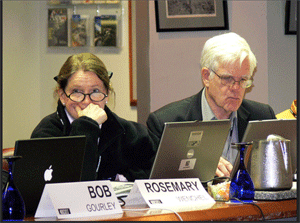
Linton Wells II (right) former Pentagon chief information officer and assistant secretary of defense for networks, at a recent Pentagon Highlands Forum session. Rosemary Wenchel, a senior official in the US Department of Homeland Security, is sitting next to him
New Scientist magazine (paywall) has compared the Highlands Forum to elite meetings like “Davos, Ditchley and Aspen,” describing it as “far less well known, yet… arguably just as influential a talking shop.” Regular Forum meetings bring together “innovative people to consider interactions between policy and technology. Its biggest successes have been in the development of high-tech network-based warfare.”
Given Wells’ role in such a Forum, perhaps it was not surprising that his defense transformation white paper was able to have such a profound impact on actual Pentagon policy. But if that was the case, why had no one noticed?
Despite being sponsored by the Pentagon, I could find no official page on the DoD website about the Forum. Active and former US military and intelligence sources had never heard of it, and neither did national security journalists. I was baffled.
The Pentagon’s intellectual capital venture firm
In the prologue to his 2007 book, A Crowd of One: The Future of Individual Identity, John Clippinger, an MIT scientist of the Media Lab Human Dynamics Group, described how he participated in a “Highlands Forum” gathering, an “invitation-only meeting funded by the Department of Defense and chaired by the assistant for networks and information integration.” This was a senior DoD post overseeing operations and policies for the Pentagon’s most powerful spy agencies including the NSA, the Defense Intelligence Agency (DIA), among others. Starting from 2003, the position was transitioned into what is now the undersecretary of defense for intelligence. The Highlands Forum, Clippinger wrote, was founded by a retired US Navy captain named Dick O’Neill. Delegates include senior US military officials across numerous agencies and divisions — “captains, rear admirals, generals, colonels, majors and commanders” as well as “members of the DoD leadership.”
What at first appeared to be the Forum’s main website describes Highlands as “an informal cross-disciplinary network sponsored by Federal Government,” focusing on “information, science and technology.” Explanation is sparse, beyond a single ‘Department of Defense’ logo.
But Highlands also has another website describing itself as an “intellectual capital venture firm” with “extensive experience assisting corporations, organizations, and government leaders.” The firm provides a “wide range of services, including: strategic planning, scenario creation and gaming for expanding global markets,” as well as “working with clients to build strategies for execution.” ‘The Highlands Group Inc.,’ the website says, organizes a whole range of Forums on these issue.
For instance, in addition to the Highlands Forum, since 9/11 the Group runs the ‘Island Forum,’ an international event held in association with Singapore’s Ministry of Defense, which O’Neill oversees as “lead consultant.” The Singapore Ministry of Defense website describes the Island Forum as “patterned after the Highlands Forum organized for the US Department of Defense.” Documents leaked by NSA whistleblower Edward Snowden confirmed that Singapore played a key role in permitting the US and Australia to tap undersea cables to spy on Asian powers like Indonesia and Malaysia.
The Highlands Group website also reveals that Highlands is partnered with one of the most powerful defense contractors in the United States. Highlands is “supported by a network of companies and independent researchers,” including “our Highlands Forum partners for the past ten years at SAIC; and the vast Highlands network of participants in the Highlands Forum.”
SAIC stands for the US defense firm, Science Applications International Corporation, which changed its name to Leidos in 2013, operating SAIC as a subsidiary. SAIC/Leidos is among the top 10 largest defense contractors in the US, and works closely with the US intelligence community, especially the NSA. According to investigative journalist Tim Shorrock, the first to disclose the vast extent of the privatization of US intelligence with his seminal book Spies for Hire, SAIC has a “symbiotic relationship with the NSA: the agency is the company’s largest single customer and SAIC is the NSA’s largest contractor.”

Richard ‘Dick’ Patrick O’Neill, founding president of the Pentagon’s Highlands Forum
The full name of Captain “Dick” O’Neill, the founding president of the Highlands Forum, is Richard Patrick O’Neill, who after his work in the Navy joined the DoD. He served his last post as deputy for strategy and policy in the Office of the Assistant Secretary for Defense for Command, Control, Communications and Intelligence, before setting up Highlands.
The Club of Yoda
But Clippinger also referred to another mysterious individual revered by Forum attendees:
“He sat at the back of the room, expressionless behind thick, black-rimmed glasses. I never heard him utter a word… Andrew (Andy) Marshall is an icon within DoD. Some call him Yoda, indicative of his mythical inscrutable status… He had served many administrations and was widely regarded as above partisan politics. He was a supporter of the Highlands Forum and a regular fixture from its beginning.”
Since 1973, Marshall has headed up one of the Pentagon’s most powerful agencies, the Office of Net Assessment (ONA), the US defense secretary’s internal ‘think tank’ which conducts highly classified research on future planning for defense policy across the US military and intelligence community. The ONA has played a key role in major Pentagon strategy initiatives, including Maritime Strategy, the Strategic Defense Initiative, the Competitive Strategies Initiative, and the Revolution in Military Affairs.

Andrew ‘Yoda’ Marshall, head of the Pentagon’s Office of Net Assessment (ONA) and co-chair of the Highlands Forum, at an early Highlands event in 1996 at the Santa Fe Institute. Marshall is retiring as of January 2015
In a rare 2002 profile in Wired, reporter Douglas McGray described Andrew Marshall, now 93 years old, as “the DoD’s most elusive” but “one of its most influential” officials. McGray added that “Vice President Dick Cheney, Defense Secretary Donald Rumsfeld, and Deputy Secretary Paul Wolfowitz” — widely considered the hawks of the neoconservative movement in American politics — were among Marshall’s “star protégés.”
Speaking at a low-key Harvard University seminar a few months after 9/11, Highlands Forum founding president Richard O’Neill said that Marshall was much more than a “regular fixture” at the Forum. “Andy Marshall is our co-chair, so indirectly everything that we do goes back into Andy’s system,” he told the audience. “Directly, people who are in the Forum meetings may be going back to give briefings to Andy on a variety of topics and to synthesize things.” He also said that the Forum had a third co-chair: the director of the Defense Advanced Research and Projects Agency (DARPA), which at that time was a Rumsfeld appointee, Anthony J. Tether. Before joining DARPA, Tether was vice president of SAIC’s Advanced Technology Sector.

Anthony J. Tether, director of DARPA and co-chair of the Pentagon’s Highlands Forum from June 2001 to February 2009
The Highlands Forum’s influence on US defense policy has thus operated through three main channels: its sponsorship by the Office of the Secretary of Defense (around the middle of last decade this was transitioned specifically to the Office of the Undersecretary of Defense for Intelligence, which is in charge of the main surveillance agencies); its direct link to Andrew ‘Yoda’ Marshall’s ONA; and its direct link to DARPA.
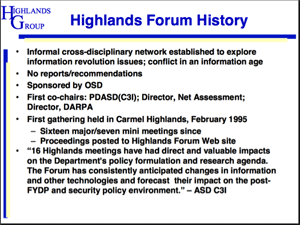
A slide from Richard O’Neill’s presentation at Harvard University in 2001
According to Clippinger in A Crowd of One, “what happens at informal gatherings such as the Highlands Forum could, over time and through unforeseen curious paths of influence, have enormous impact, not just within the DoD but throughout the world.” He wrote that the Forum’s ideas have “moved from being heretical to mainstream. Ideas that were anathema in 1999 had been adopted as policy just three years later.”
Although the Forum does not produce “consensus recommendations,” its impact is deeper than a traditional government advisory committee. “The ideas that emerge from meetings are available for use by decision-makers as well as by people from the think tanks,” according to O’Neill:
“We’ll include people from Booz, SAIC, RAND, or others at our meetings… We welcome that kind of cooperation, because, truthfully, they have the gravitas. They are there for the long haul and are able to influence government policies with real scholarly work… We produce ideas and interaction and networks for these people to take and use as they need them.”
My repeated requests to O’Neill for information on his work at the Highlands Forum were ignored. The Department of Defense also did not respond to multiple requests for information and comment on the Forum.
Information warfare
The Highlands Forum has served as a two-way ‘influence bridge’: on the one hand, for the shadow network of private contractors to influence the formulation of information operations policy across US military intelligence; and on the other, for the Pentagon to influence what is going on in the private sector. There is no clearer evidence of this than the truly instrumental role of the Forum in incubating the idea of mass surveillance as a mechanism to dominate information on a global scale.
In 1989, Richard O’Neill, then a US Navy cryptologist, wrote a paper for the US Naval War College, ‘Toward a methodology for perception management.’ In his book, Future Wars, Col. John Alexander, then a senior officer in the US Army’s Intelligence and Security Command (INSCOM), records that O’Neill’s paper for the first time outlined a strategy for “perception management” as part of information warfare (IW). O’Neill’s proposed strategy identified three categories of targets for IW: adversaries, so they believe they are vulnerable; potential partners, “so they perceive the cause [of war] as just”; and finally, civilian populations and the political leadership so they “perceive the cost as worth the effort.” A secret briefing based on O’Neill’s work “made its way to the top leadership” at DoD. “They acknowledged that O’Neill was right and told him to bury it.
Except the DoD didn’t bury it. Around 1994, the Highlands Group was founded by O’Neill as an official Pentagon project at the appointment of Bill Clinton’s then defense secretary William Perry — who went on to join SAIC’s board of directors after retiring from government in 2003.
In O’Neill’s own words, the group would function as the Pentagon’s ‘ideas lab’. According to Government Executive, military and information technology experts gathered at the first Forum meeting “to consider the impacts of IT and globalization on the United States and on warfare. How would the Internet and other emerging technologies change the world?” The meeting helped plant the idea of “network-centric warfare” in the minds of “the nation’s top military thinkers.”
Excluding the public
Official Pentagon records confirm that the Highlands Forum’s primary goal was to support DoD policies on O’Neill’s specialism: information warfare. According to the Pentagon’s 1997 Annual Report to the President and the Congress under a section titled ‘Information Operations,’ (IO) the Office of the Secretary of Defense (OSD) had authorized the “establishment of the Highlands Group of key DoD, industry, and academic IO experts” to coordinate IO across federal military intelligence agencies.
The following year’s DoD annual report reiterated the Forum’s centrality to information operations: “To examine IO issues, DoD sponsors the Highlands Forum, which brings together government, industry, and academic professionals from various fields.”
Notice that in 1998, the Highlands ‘Group’ became a ‘Forum.’ According to O’Neill, this was to avoid subjecting Highlands Forums meetings to “bureaucratic restrictions.” What he was alluding to was the Federal Advisory Committee Act (FACA), which regulates the way the US government can formally solicit the advice of special interests.
Known as the ‘open government’ law, FACA requires that US government officials cannot hold closed-door or secret consultations with people outside government to develop policy. All such consultations should take place via federal advisory committees that permit public scrutiny. FACA requires that meetings be held in public, announced via the Federal Register, that advisory groups are registered with an office at the General Services Administration, among other requirements intended to maintain accountability to the public interest.
But Government Executive reported that “O’Neill and others believed” such regulatory issues “would quell the free flow of ideas and no-holds-barred discussions they sought.” Pentagon lawyers had warned that the word ‘group’ might necessitate certain obligations and advised running the whole thing privately: “So O’Neill renamed it the Highlands Forum and moved into the private sector to manage it as a consultant to the Pentagon.” The Pentagon Highlands Forum thus runs under the mantle of O’Neill’s ‘intellectual capital venture firm,’ ‘Highlands Group Inc.’
In 1995, a year after William Perry appointed O’Neill to head up the Highlands Forum, SAIC — the Forum’s “partner” organization — launched a new Center for Information Strategy and Policy under the direction of “Jeffrey Cooper, a member of the Highlands Group who advises senior Defense Department officials on information warfare issues.” The Center had precisely the same objective as the Forum, to function as “a clearinghouse to bring together the best and brightest minds in information warfare by sponsoring a continuing series of seminars, papers and symposia which explore the implications of information warfare in depth.” The aim was to “enable leaders and policymakers from government, industry, and academia to address key issues surrounding information warfare to ensure that the United States retains its edge over any and all potential enemies.”
Despite FACA regulations, federal advisory committees are already heavily influenced, if not captured, by corporate power. So in bypassing FACA, the Pentagon overrode even the loose restrictions of FACA, by permanently excluding any possibility of public engagement.
O’Neill’s claim that there are no reports or recommendations is disingenuous. By his own admission, the secret Pentagon consultations with industry that have taken place through the Highlands Forum since 1994 have been accompanied by regular presentations of academic and policy papers, recordings and notes of meetings, and other forms of documentation that are locked behind a login only accessible by Forum delegates. This violates the spirit, if not the letter, of FACA — in a way that is patently intended to circumvent democratic accountability and the rule of law.
The Highlands Forum doesn’t need to produce consensus recommendations. Its purpose is to provide the Pentagon a shadow social networking mechanism to cement lasting relationships with corporate power, and to identify new talent, that can be used to fine-tune information warfare strategies in absolute secrecy.
Total participants in the DoD’s Highlands Forum number over a thousand, although sessions largely consist of small closed workshop style gatherings of maximum 25–30 people, bringing together experts and officials depending on the subject. Delegates have included senior personnel from SAIC and Booz Allen Hamilton, RAND Corp., Cisco, Human Genome Sciences, eBay, PayPal, IBM, Google, Microsoft, AT&T, the BBC, Disney, General Electric, Enron, among innumerable others; Democrat and Republican members of Congress and the Senate; senior executives from the US energy industry such as Daniel Yergin of IHS Cambridge Energy Research Associates; and key people involved in both sides of presidential campaigns.
Other participants have included senior media professionals: David Ignatius, associate editor of the Washington Post and at the time the executive editor of the International Herald Tribune; Thomas Friedman, long-time New York Times columnist; Arnaud de Borchgrave, an editor at Washington Times and United Press International; Steven Levy, a former Newsweek editor, senior writer for Wired and now chief tech editor at Medium; Lawrence Wright, staff writer at the New Yorker; Noah Shachtmann, executive editor at the Daily Beast; Rebecca McKinnon, co-founder of Global Voices Online; Nik Gowing of the BBC; and John Markoff of the New York Times.
Due to its current sponsorship by the OSD’s undersecretary of defense for intelligence, the Forum has inside access to the chiefs of the main US surveillance and reconnaissance agencies, as well as the directors and their assistants at DoD research agencies, from DARPA, to the ONA. This also means that the Forum is deeply plugged into the Pentagon’s policy research task forces.
Google: seeded by the Pentagon
In 1994 — the same year the Highlands Forum was founded under the stewardship of the Office of the Secretary of Defense, the ONA, and DARPA — two young PhD students at Stanford University, Sergey Brin and Larry Page, made their breakthrough on the first automated web crawling and page ranking application. That application remains the core component of what eventually became Google’s search service. Brin and Page had performed their work with funding from the Digital Library Initiative (DLI), a multi-agency programme of the National Science Foundation (NSF), NASA and DARPA.
But that’s just one side of the story.
Throughout the development of the search engine, Sergey Brin reported regularly and directly to two people who were not Stanford faculty at all: Dr. Bhavani Thuraisingham and Dr. Rick Steinheiser. Both were representatives of a sensitive US intelligence community research programme on information security and data-mining.
Dr. Bhavani Thuraisingham is the Louis A. Beecherl, Jr. Distinguished Professor of computer science and the Executive Director of the Cyber Security Research and Education Institute at the University of Texas at Dallas.[1] She is a Visiting Senior Research Fellow in the Department of Informatics at Kings College University of London and a 2017-2018 Cyber Security Policy Fellow at New America.[2]
Thuraisingham received a B.Sc. in Pure Mathematics, Applied Mathematics, and Physics from the University of Ceylon in 1975. She received an M.Sc. in Mathematical Logic and Foundations of Computer Science from the University of Bristol and an M.S. in Computer Science from the University of Minnesota in 1977 and 1984 respectively. She earned a Ph.D. in the Theory of Computation and Computability Theory from the University of Wales, Swansea in 1979 and a Doctor of Engineering at the University of Bristol in 2011.[3]
Thuraisingham has 35 years work experience in commercial industry (Honeywell), Federally Funded Research and Development Center (MITRE), Government (NSF) and Academia.[1] She has conducted research in cyber security for thirty years and specializes in applying data analytics for cyber security. Her work has resulted in over 100 keynote addresses, 120 journal papers, 300 conference papers, 15 books (2 pending) [4] and 8 patents (3 pending).[5][6][7]
-- Bhavani Thuraisingham, by Wikipedia
Thuraisingham is currently the Louis A. Beecherl distinguished professor and executive director of the Cyber Security Research Institute at the University of Texas, Dallas, and a sought-after expert on data-mining, data management and information security issues. But in the 1990s, she worked for the MITRE Corp., a leading US defense contractor, where she managed the Massive Digital Data Systems initiative, a project sponsored by the NSA, CIA, and the Director of Central Intelligence, to foster innovative research in information technology.
“We funded Stanford University through the computer scientist Jeffrey Ullman, who had several promising graduate students working on many exciting areas,” Prof. Thuraisingham told me. “One of them was Sergey Brin, the founder of Google. The intelligence community’s MDDS program essentially provided Brin seed-funding, which was supplemented by many other sources, including the private sector.”
This sort of funding is certainly not unusual, and Sergey Brin’s being able to receive it by being a graduate student at Stanford appears to have been incidental. The Pentagon was all over computer science research at this time. But it illustrates how deeply entrenched the culture of Silicon Valley is in the values of the US intelligence community.
In an extraordinary document hosted by the website of the University of Texas, Thuraisingham recounts that from 1993 to 1999, “the Intelligence Community [IC] started a program called Massive Digital Data Systems (MDDS) that I was managing for the Intelligence Community when I was at the MITRE Corporation.” The program funded 15 research efforts at various universities, including Stanford. Its goal was developing “data management technologies to manage several terabytes to petabytes of data,” including for “query processing, transaction management, metadata management, storage management, and data integration.”
At the time, Thuraisingham was chief scientist for data and information management at MITRE, where she led team research and development efforts for the NSA, CIA, US Air Force Research Laboratory, as well as the US Navy’s Space and Naval Warfare Systems Command (SPAWAR) and Communications and Electronic Command (CECOM). She went on to teach courses for US government officials and defense contractors on data-mining in counter-terrorism.
In her University of Texas article, she attaches the copy of an abstract of the US intelligence community’s MDDS program that had been presented to the “Annual Intelligence Community Symposium” in 1995. The abstract reveals that the primary sponsors of the MDDS programme were three agencies: the NSA, the CIA’s Office of Research & Development, and the intelligence community’s Community Management Staff (CMS) which operates under the Director of Central Intelligence. Administrators of the program, which provided funding of around 3–4 million dollars per year for 3–4 years, were identified as Hal Curran (NSA), Robert Kluttz (CMS), Dr. Claudia Pierce (NSA), Dr. Rick Steinheiser (ORD — standing for the CIA’s Office of Research and Development), and Dr. Thuraisingham herself.
Thuraisingham goes on in her article to reiterate that this joint CIA-NSA program partly funded Sergey Brin to develop the core of Google, through a grant to Stanford managed by Brin’s supervisor Prof. Jeffrey D. Ullman:
“In fact, the Google founder Mr. Sergey Brin was partly funded by this program while he was a PhD student at Stanford. He together with his advisor Prof. Jeffrey Ullman and my colleague at MITRE, Dr. Chris Clifton [Mitre’s chief scientist in IT], developed the Query Flocks System which produced solutions for mining large amounts of data stored in databases. I remember visiting Stanford with Dr. Rick Steinheiser from the Intelligence Community and Mr. Brin would rush in on roller blades, give his presentation and rush out. In fact the last time we met in September 1998, Mr. Brin demonstrated to us his search engine which became Google soon after.”
Brin and Page officially incorporated Google as a company in September 1998, the very month they last reported to Thuraisingham and Steinheiser. ‘Query Flocks’ was also part of Google’s patented ‘PageRank’ search system, which Brin developed at Stanford under the CIA-NSA-MDDS programme, as well as with funding from the NSF, IBM and Hitachi. That year, MITRE’s Dr. Chris Clifton, who worked under Thuraisingham to develop the ‘Query Flocks’ system, co-authored a paper with Brin’s superviser, Prof. Ullman, and the CIA’s Rick Steinheiser. Titled ‘Knowledge Discovery in Text,’ the paper was presented at an academic conference.
-- "Knowledge Discovery in Text," with Rick Steinheiser, Arnon Rosenthal, and Jeffrey Ullman, Symposium on Advanced Information Processing & Analysis (AIPA98), Tysons Corner, Virginia, March 17-18, 1998, Abstract.
-- Data Mining on Text, by Dr. Chris Clifton and Dr. Rick Steinheiser
“The MDDS funding that supported Brin was significant as far as seed-funding goes, but it was probably outweighed by the other funding streams,” said Thuraisingham. “The duration of Brin’s funding was around two years or so. In that period, I and my colleagues from the MDDS would visit Stanford to see Brin and monitor his progress every three months or so. We didn’t supervise exactly, but we did want to check progress, point out potential problems and suggest ideas. In those briefings, Brin did present to us on the query flocks research, and also demonstrated to us versions of the Google search engine.”
Brin thus reported to Thuraisingham and Steinheiser regularly about his work developing Google.
==


